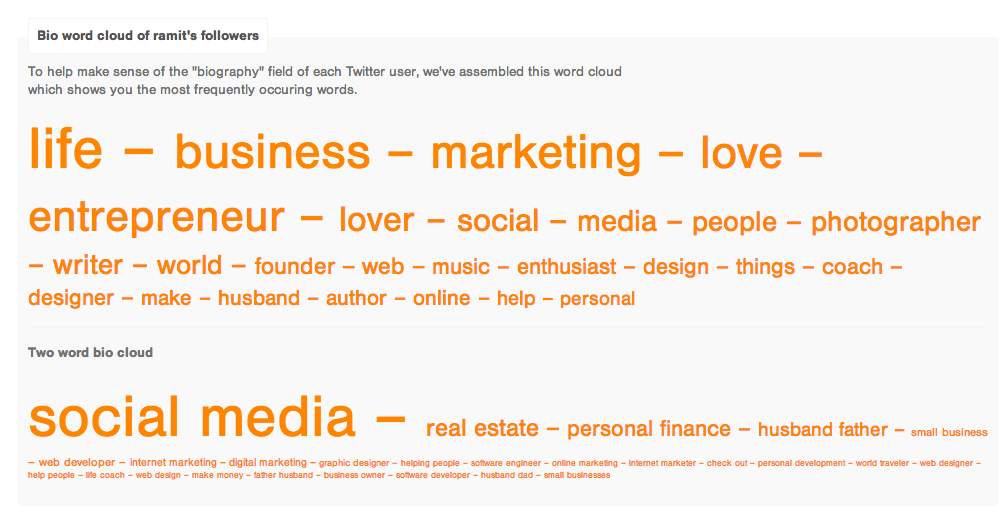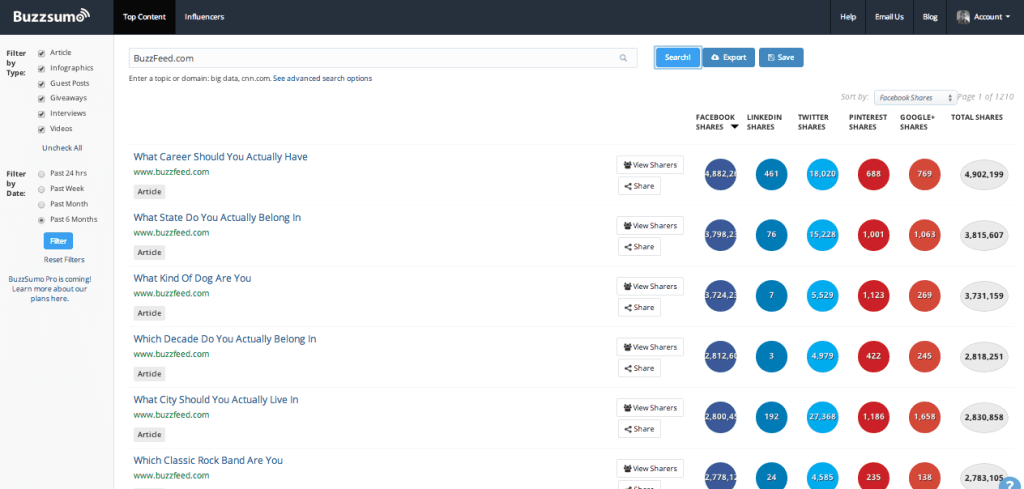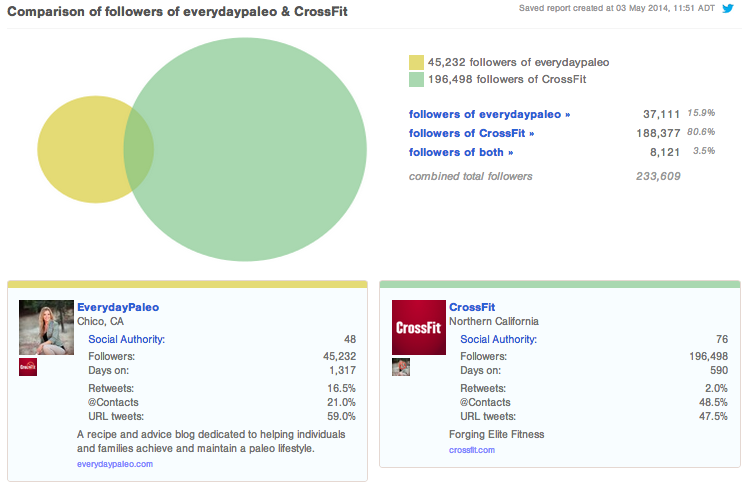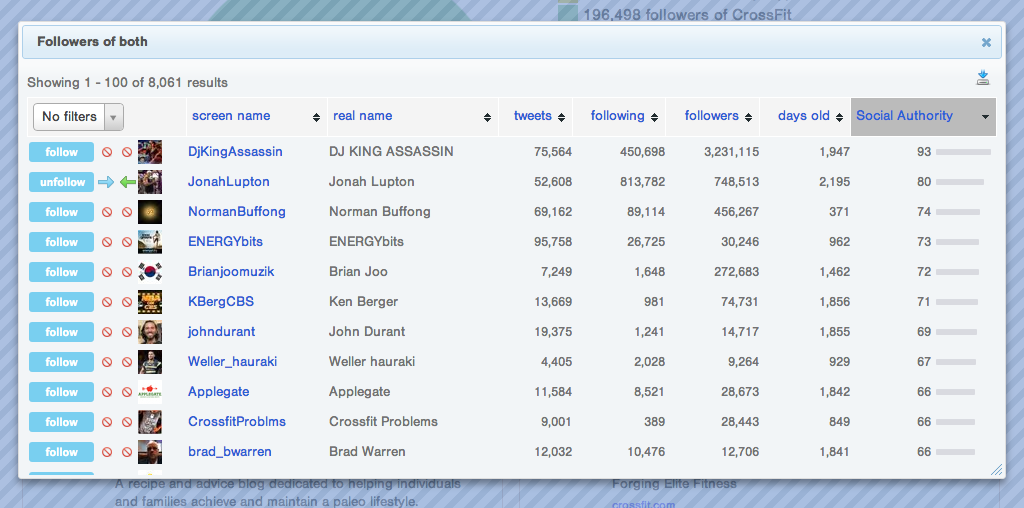Article's Content
NBA great Michael Jordan once said, “Talent wins games but intelligence and teamwork wins championships.”
I’m not going to get into the importance of teamwork but I am going to share some insights around the power of content intelligence.
What is content intelligence? The quick definition from Hawkeye.ai goes like this:
“Content intelligence is technology that provides data and insights on owned and third-party content to increase results from marketing”
At its root, content intelligence comes from asking a series of questions:
- Who influences your audiences perception & beliefs?
- What websites your audience is reading?
- What content your audience is sharing?
- What trends is your audience following?
- What motivates your audience?
- What is your audiences persona?
The answers to these questions should guide everything you do.
Too many marketers are using gut instinct to make decisions around what topics they should cover instead of looking closely at what’s actually working. Sometimes what seems like the most obvious ideas are actually the worst.
For example, when the entire industry is talking about X, it might be worth talking about Y. Or if the entire industry is taking a certain positioning on a hot topic, it might be worth taking the contrarian approach.
You see, it’s easy for marketers and publishers to play the copy game but audiences can see right through it. Instead of embracing and accepting the status quo, make a stand to create something different.
In this blog post, I’m going to uncover a few different strategies and tactics that you can use to uncover insights and content intelligence. Some of these are ideas that you can start leveraging and capitalizing on immediately, others will require a bit of Software and an understanding of how to navigate the social web. My hope is that it will at the very least give you the inspiration and insight you need to start placing more value on content intelligence.
Let’s get to it:
Gather Personal Intelligence On Your Followers
The first step to creating content that works is getting a better understanding of who your readers are.
The questions above are a great place to start, but how do you answer them? To come to conclusions and gather intelligence on your audience, you have to go where your audience is.
In most cases, your audience is likely to be following you on Twitter or at least following someone who is telling a similar story as you. One great way to understand who you’re speaking to is to look at their profiles to understand what they do, who they are and what interests them.
FollowerWonk is a tool that I use on a regular basis to gather insights for clients and my own efforts. It gives you high quality data and insight surrounding the people who follow certain users on Twitter and provides the information back to you in the form of a report.
Let’s say you manage a blog all about personal finance. You might initially assume that the person following your blog is a parent of two with a passion for the outdoors. That’s vague and likely a bit off the mark without having insight and intelligence to back it up. Using FollowerWonk, you can plug in a personal finance influencer like Ramit Sethi of I’ll Teach You To Be Rich’s twitter account and it will tell you what works most frequently occur in his followers bios:

What this shows me is that content around Business, Marketing, Life and Relationships is something that will drive interest among this audience. It also tells me that I should share information that is tailored towards entrepreneurs, writers, designers, real estate brokers and photographers. All of these insights help paint a clearer picture of what your audience looks like to ensure you can deliver a message that is relevant and compelling.
Understand The Hot Topics & Audience Interests
You already know that the internet is filled with millions of different communities. To identify what content works best for your audience, you must search for these communities and gather insight from what’s being said and shared within them.
When I’m brainstorming new ideas for blog posts on Marketing or Business, I often visit sites like Reddit, GrowthHackers or HackerNews to see what’s trending. Once there, I do a quick search for a topic of interest to my readers and study the results.
Similar to the example above, let’s pretend you’re managing a blog that is all about personal finance. It’s easy to assume that people want to hear about retirement saving or buying their first home and the benefits of an affordability calculator. Sure, it’s likely that those topics are of interest to your audience but hundreds of blogs have covered that exact topic. Researching active communities on the other hand, will shed light on new discussions and new topics that your target is interested in.
For example, if you visit the Subreddit /r/PersonalFinance – You will uncover a handful of topics that can lead to content inspiration. I did a quick scan of this subreddit, clicked “Top Posts” to ensure the content I found was the most popular and here’s what I found:

The top post, “Should I Put All My Child’s Savings Into Bitcoin” was bang on with what I was looking for.
It’s something that most personal finance blogs aren’t discussing but it’s something that the personal finance community on reddit found very engaging. I’d take this insight and create a very high quality piece of content that focuses on educating people about Bitcoin and come to a conclusion around the answer to this question.
As I scrolled through the list, I saw a handful of other topics that could make for great content but found two in particular that could act as easy wins.
The second post that caught my interest was about buying a car from a car dealership. The post generated more than one thousand comments and fifteen thousand up-votes. Recognizing this high level of engagement, it would be stupid to not cover this topic in the form of an infographic or written guide.
Finally, the last post that caught my eye was intriguing because it made such an aggressive claim. I’d take this insight and create a blog post that asks the question Should You Ever Co-Sign A Loan? or take a more intriguing approach with a blog post titled Everything You Should Know Before Co-Signing A Loan.
Understand The Format Your Audience Wants

A few weeks ago, I got into a quality debate with a friend around the value of listening to Audiobooks vs. the value of reading them.
At the end of the day, some people like to consume their information one way and some people like to consume their content another. It’s this notion that also trickles over into the content marketing landscape as we have hundreds of different options for how we communicate our stories.
You have to decide whether your audience wants to receive their content in the form of blog posts, podcasts, ebooks, infographics, slideshare or webinars… And that’s just a handful of the different options you can choose from.
To better understand what format your audience wants, you can look to channels they consume on the regular and see what format is being shared and consumed the most.
I did a quick search using BuzzSumo, a site that shows you what content is going viral and being shared the most, and found that 9 of the top 10 posts from BuzzFeed.com were quizzes. This insight would indicate to BuzzFeed that quizzes are one of their most valuable types of content and one that they should look to leverage as much as possible. If you’re competing with BuzzFeed, it’s an insight that maybe you need to look at launching your own quizzes. You can check out a no-code online quiz maker platform like Outgrow to create and publish your quizzes.
Look to your competitors and see what content on their site is being shared most frequently. Understand that certain formats take more time and effort to create but also understand the value that one high quality piece of content can offer your brand in the long term.
Look For Common Interests In Your Audience
Inspired from Mike Kings amazing post on Personas a few months ago, Facebook has also become a great tool for gathering insights. To better understand what your audience is interested in you can use Open Graph to reveal common interests among those you’re looking to target.
Open Graph allows you to filter people from across the world based on common interests and demographics. If I was a Paleo blogger or publisher and wanted to learn more about my audience, I could simply do a search like this:

As a result, I’m able to look through these individuals profiles with the goal of uncovering an insight that can help me better tell my story and deliver value. One trend I happened to notice when I searched for people who followed “EverydayPaleo” a popular blog in the Paleo community was that a lot of these people also did CrossFit.
The next step was then to visit followerwonk.com and cross reference people who followed EverdayPaleo on Twitter and those who followed CrossFit on Twitter. As a result, I found that there was a total overlap of 8,121 people.

This translates into about 17% of EveryDayPaleos existing following on Twitter and can act as an insight to show an opportunity to create content that would resonate with CrossFitters. How would I do that? Something tells me there’s a community or two specifically used by CrossFitters on Reddit and hundreds of other platforms.
This also shows me that there are likely to be influencers who follow both of us that I should look at more closely to see if there’s an opportunity for cross promotion, guest blogging or some type of collaborative marketing effort. The list below shows me exactly who follows both CrossFit and EveryDayPaleo on Twitter:

These individuals are specifically those who have a high social authority. Meaning, when they tweet, people listen. As such, it would make a lot of sense for me or the brand to build a stronger relationship with everyone on the list to increase the chances of having them share my content, tell my story and influence their following.
The next step is to reach out to these individuals without coming off as another Joe Blow who simply wants to take-take-take. There are plenty of resources out there on how to best reach out to VIPs but one of my favourites is this outreach piece from Ramit Sethi. Leverage the scripts found in this article to turn cold relationships into some of the most valuable relationships in your address book. Beyond the ideas that Ramit covers, look to strengthen your connection with these individuals by retweeting their content, engaging when appropriate and simply treating them like you would want to be treated.
Conclusion
If you can take these strategies, tips and tricks and apply them to your content marketing efforts, you’ll likely be more successful than your competition.
I’m a believer that insights and intelligence are where every strategy and plan have to start with.
If you start your plan based on nothing more than assumptions and guesswork, you’ll likely be communicating and telling a story that doesn’t resonate with anyone.
What other channels can you leverage to gather insight about your audience? Drop a comment & let me know.








